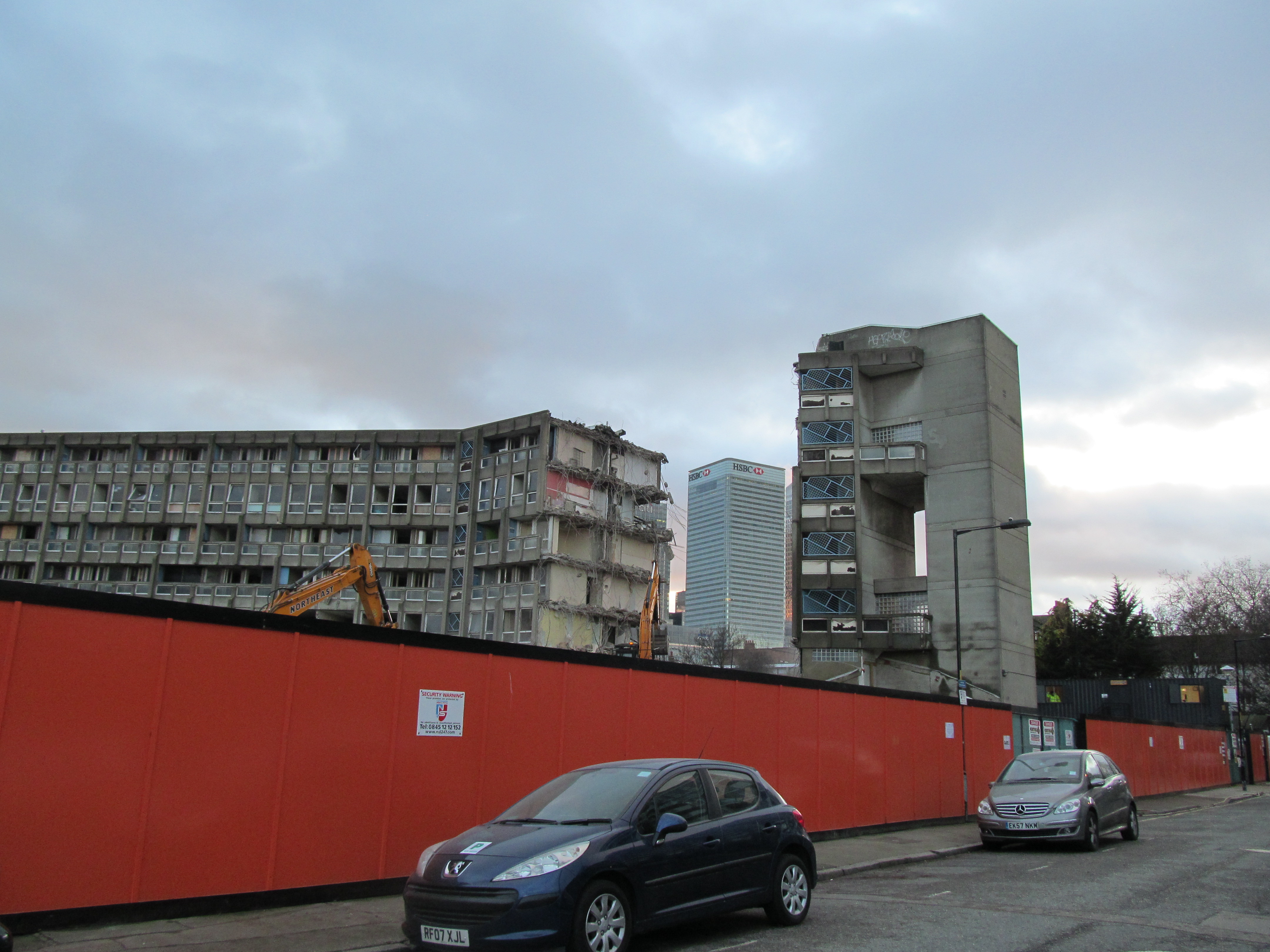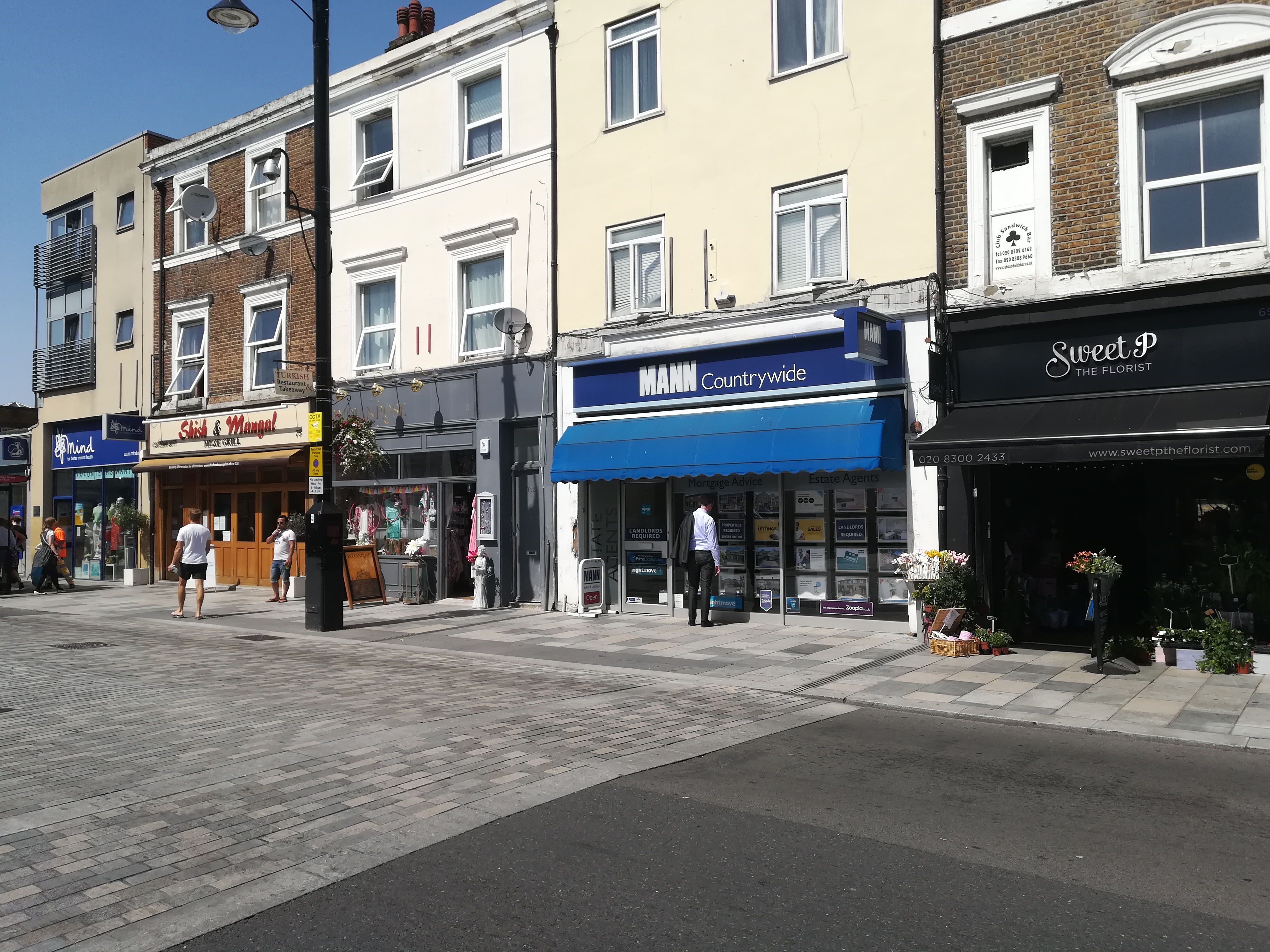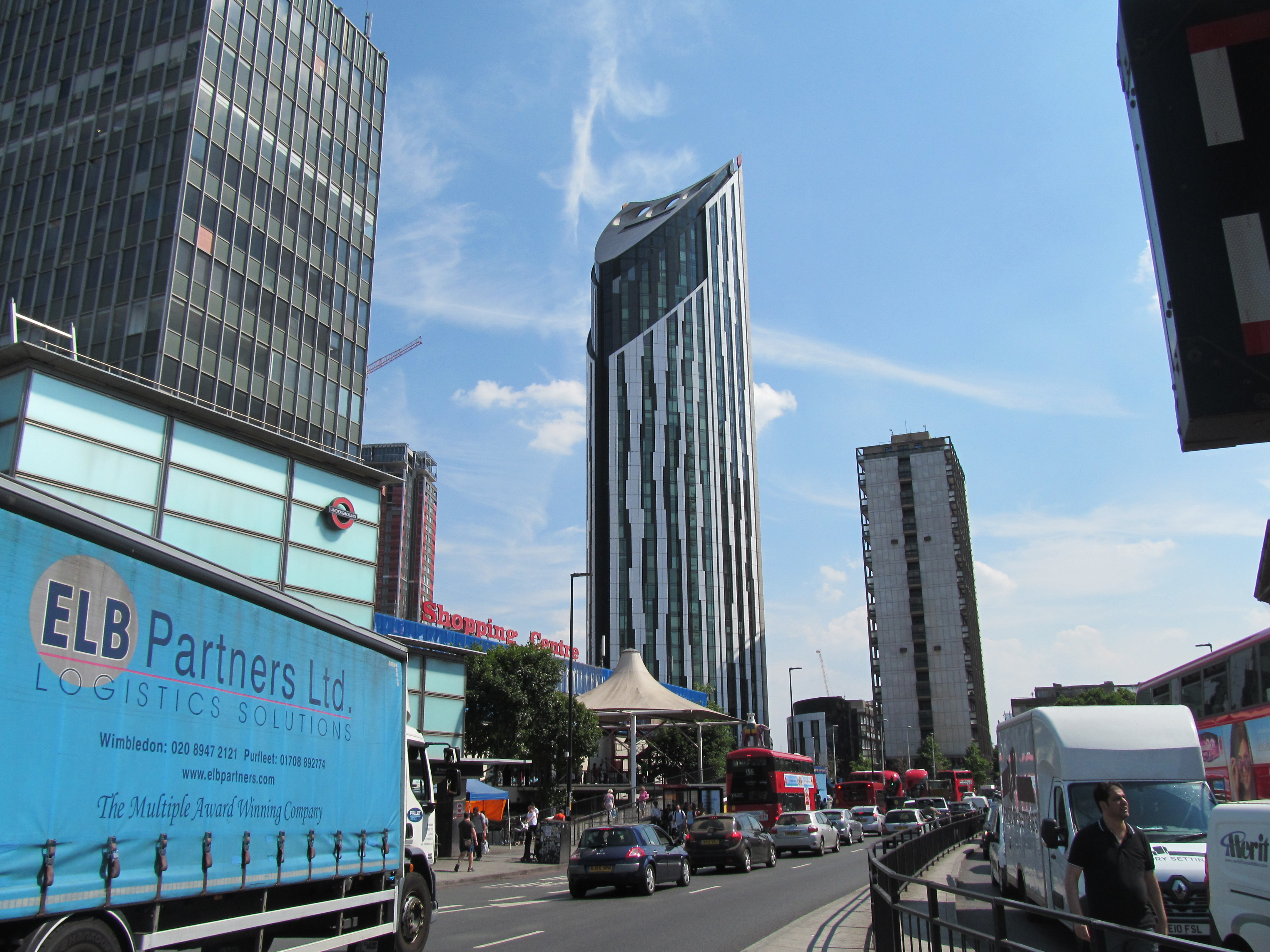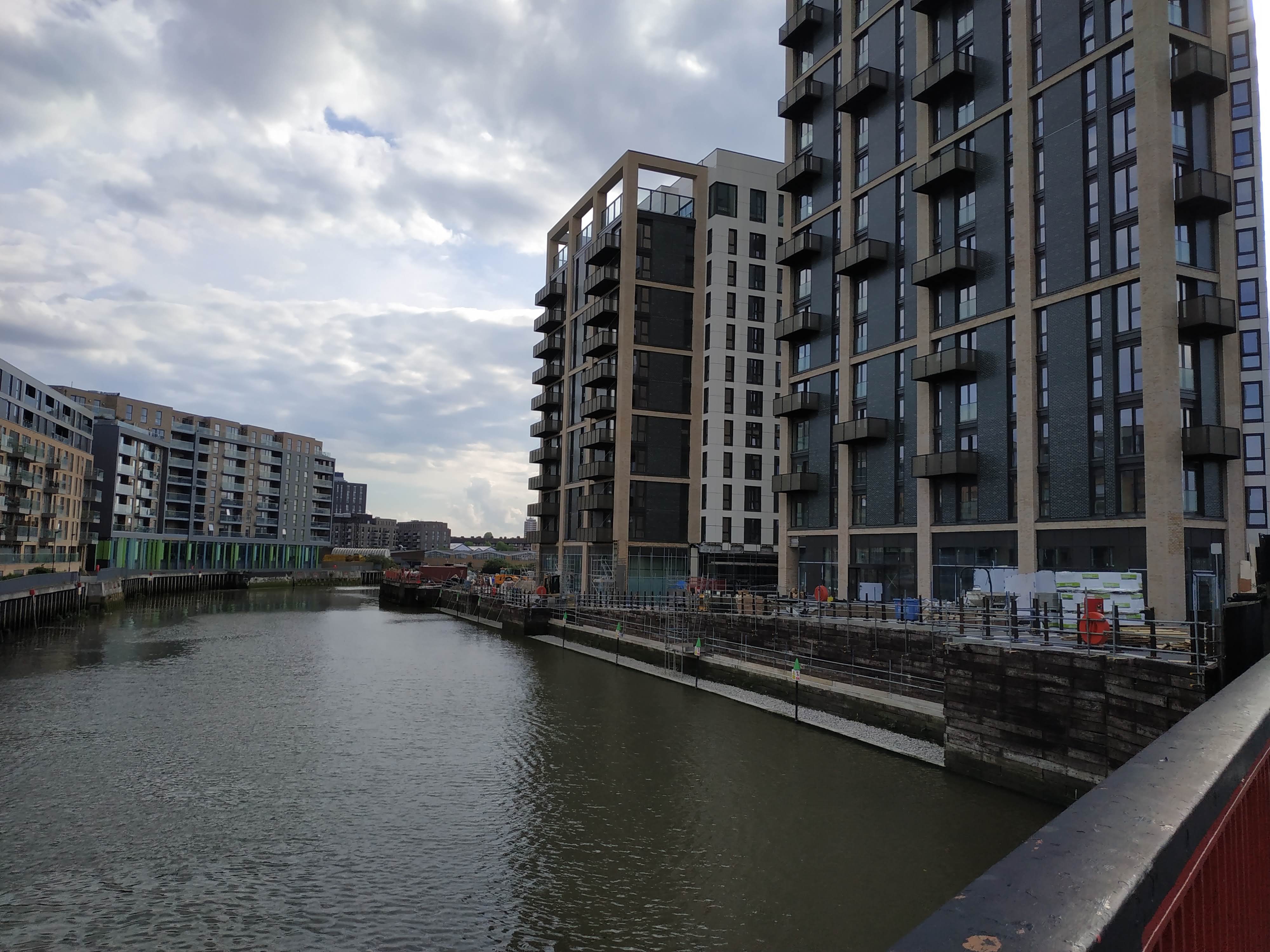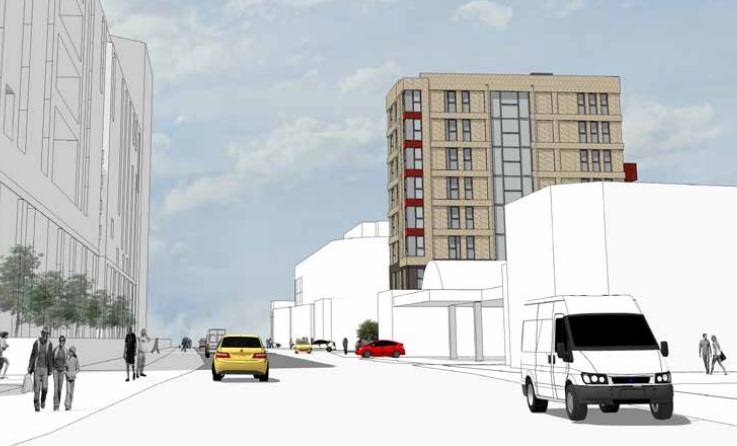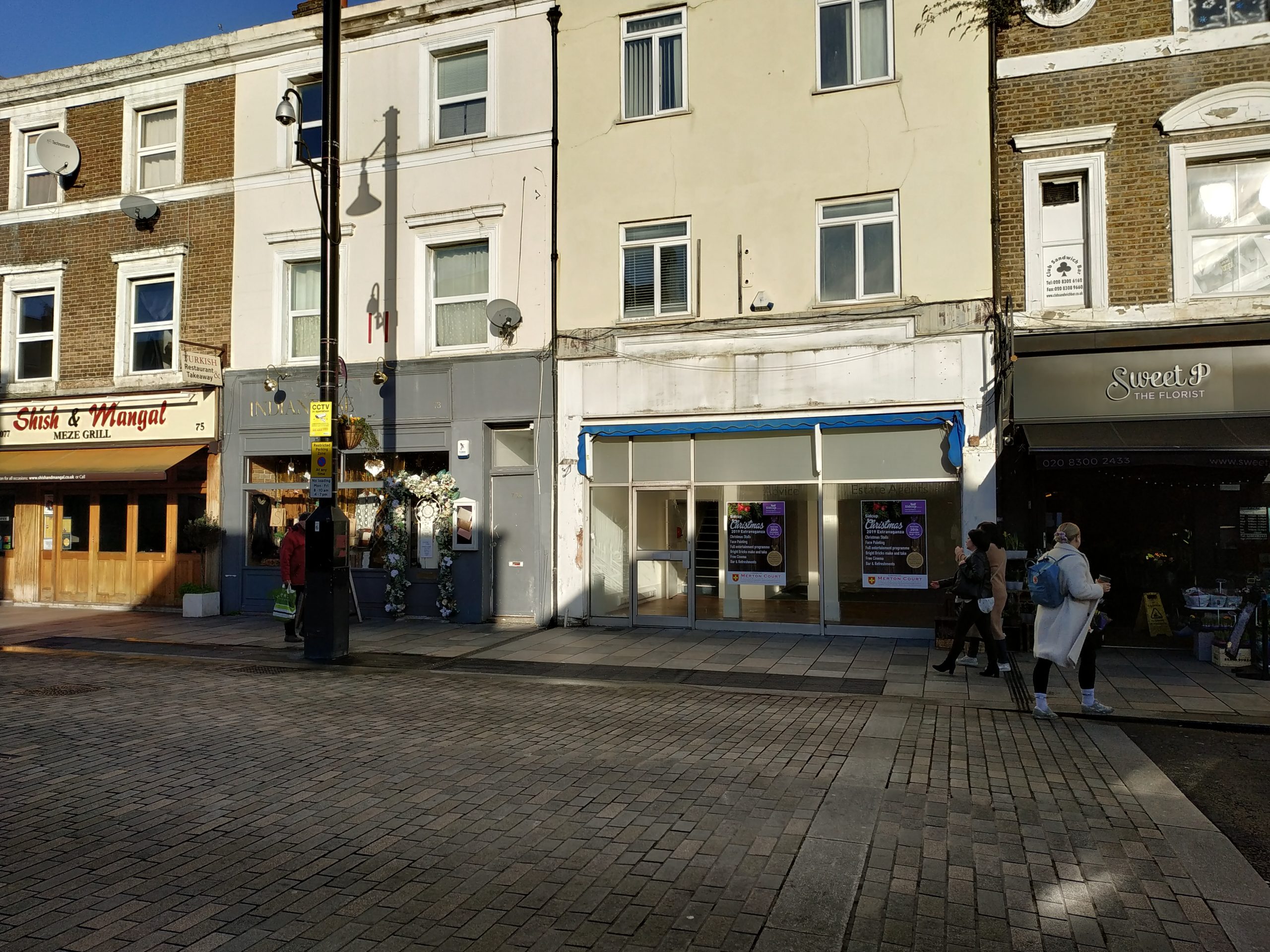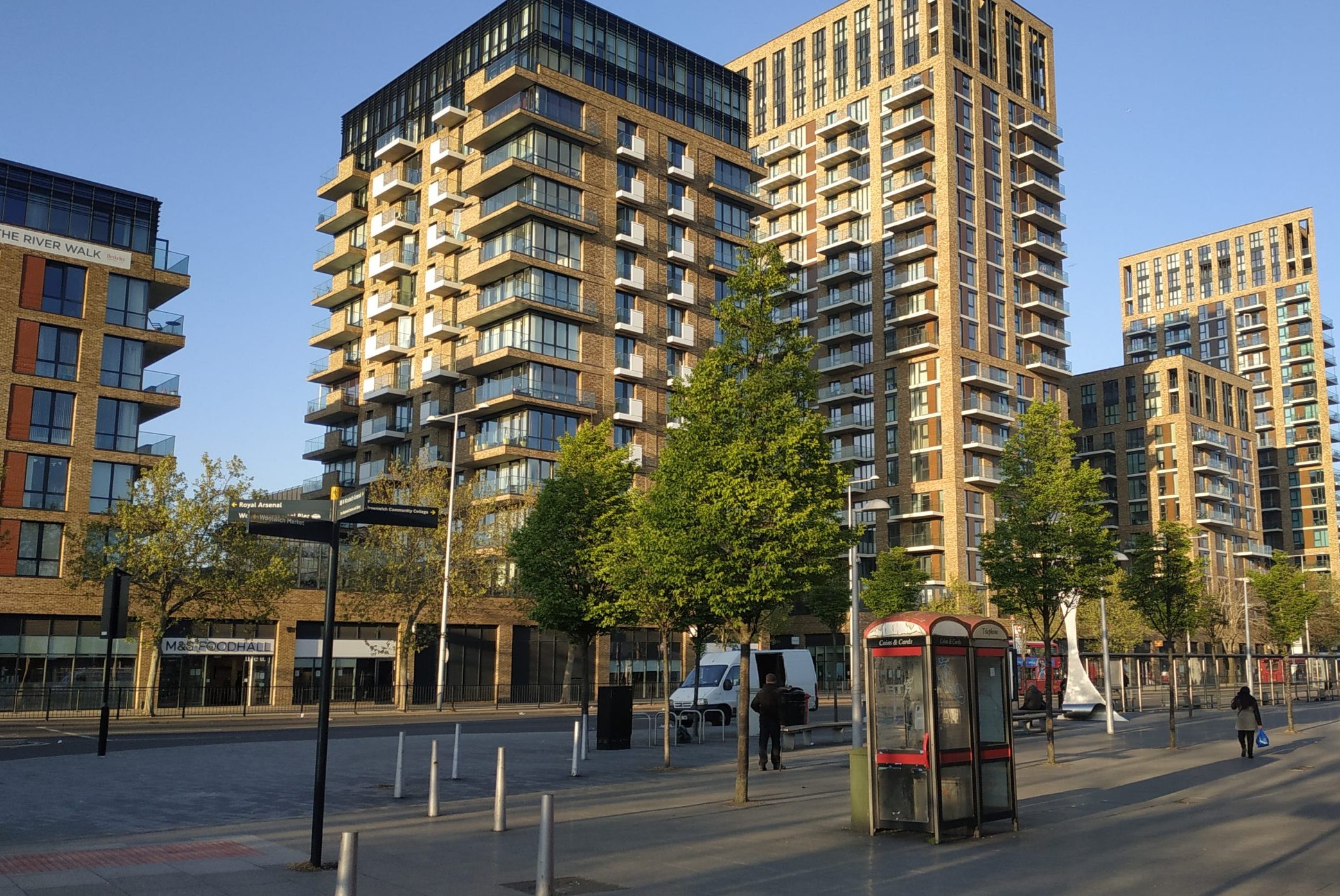Another iconic post-war estate meets the wrecking ball: demolition of Robin Hood Gardens underway
One of London’s most famous post-war housing estates has met the wrecking ball over the past week as the culmination of years of heated debate reaches its conclusion. It’s part of Tower Hamlets plan for 1500+ new homes as Robin Hood Gardens becomes “Blackwall Reach”.
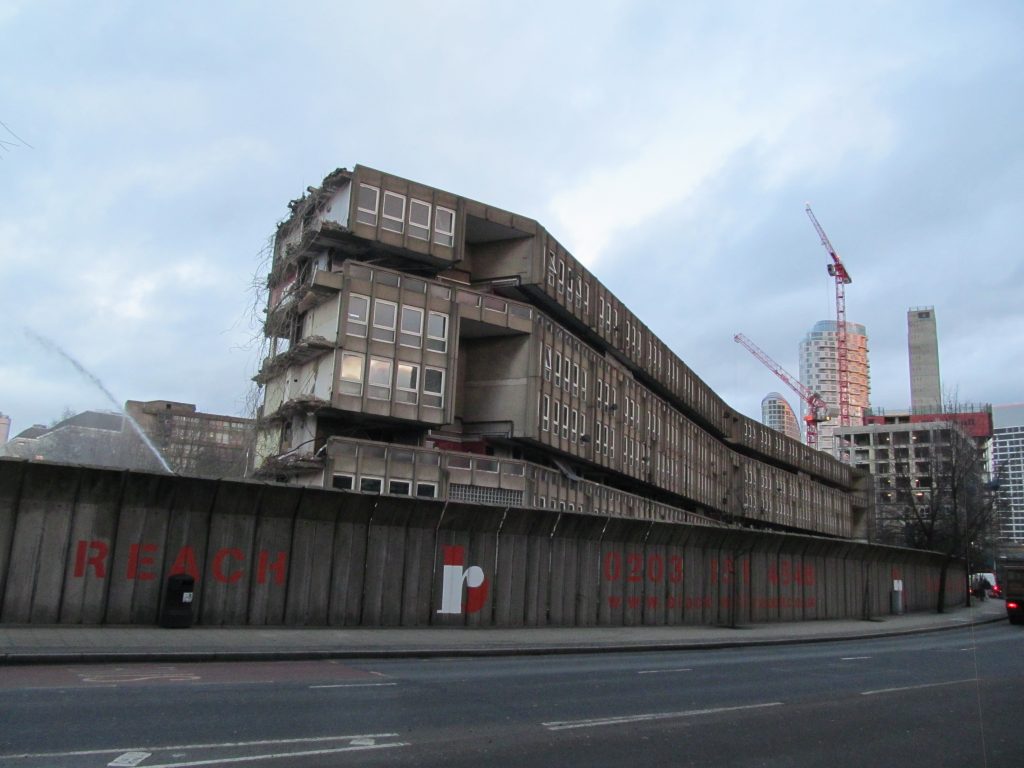
Robin Hood Gardens, designed by Alison and Peter Smithson, was completed in 1972. It’s never been without controversy and divides opinion like most post-war public housing. Probably more than most. A spirited defence was mounted to prevent demolition. It failed.
It’s clear that maintenance of the buildings has been neglected for a long time. Despite that, the impressive scale and detailing still impresses. On a sunny day, the concrete exudes a real warmth. New-builds in the area, covered in grey plastic-like cladding, manage to look drab even during a spectacular sunset.
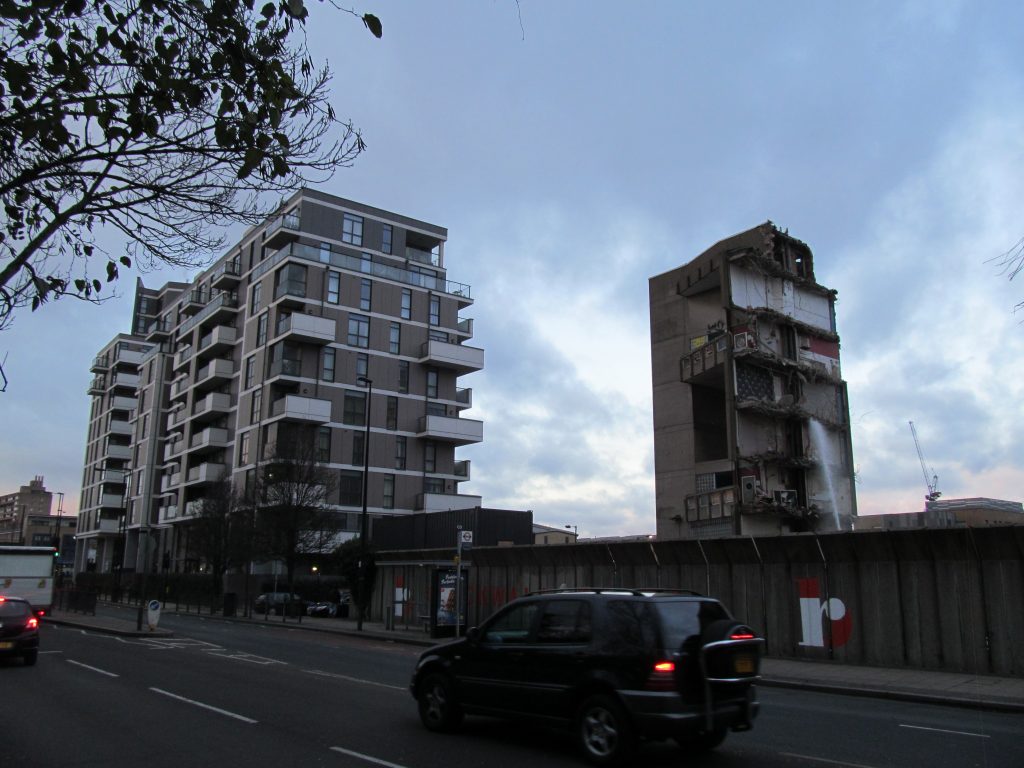
One of the biggest problems with the place has long been the Berlin Wall surrounding the site. This offered a pretty poor impression aiding the negative reputation of the place. It also helped obscure the sweep of long, weaving blocks from surrounding streets.
The aspiration to provide privacy and protect from traffic may have been laudable but a hulking 12 foot concrete wall was misguided, to put it mildly and did much to exacerbate negative perceptions.
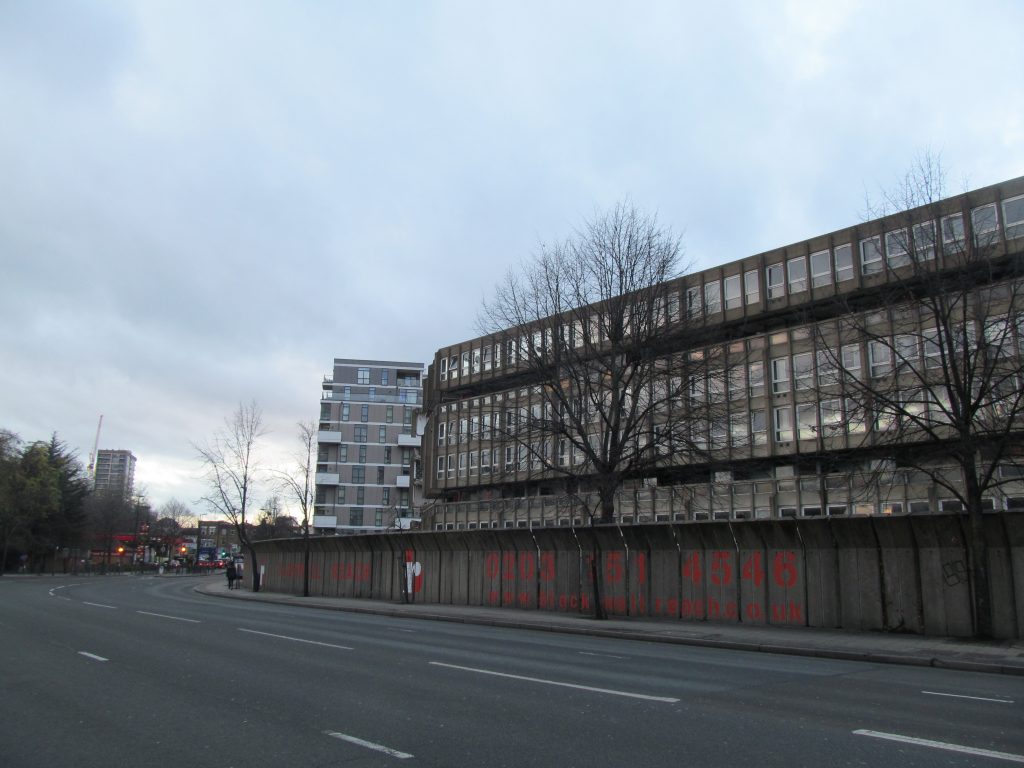
True, it faces a wide road and though it can be busy, it’s usually no worse than many streets. There pics were taken at the beginning of the evening rush hour. It wasn’t that bad and normally isn’t.
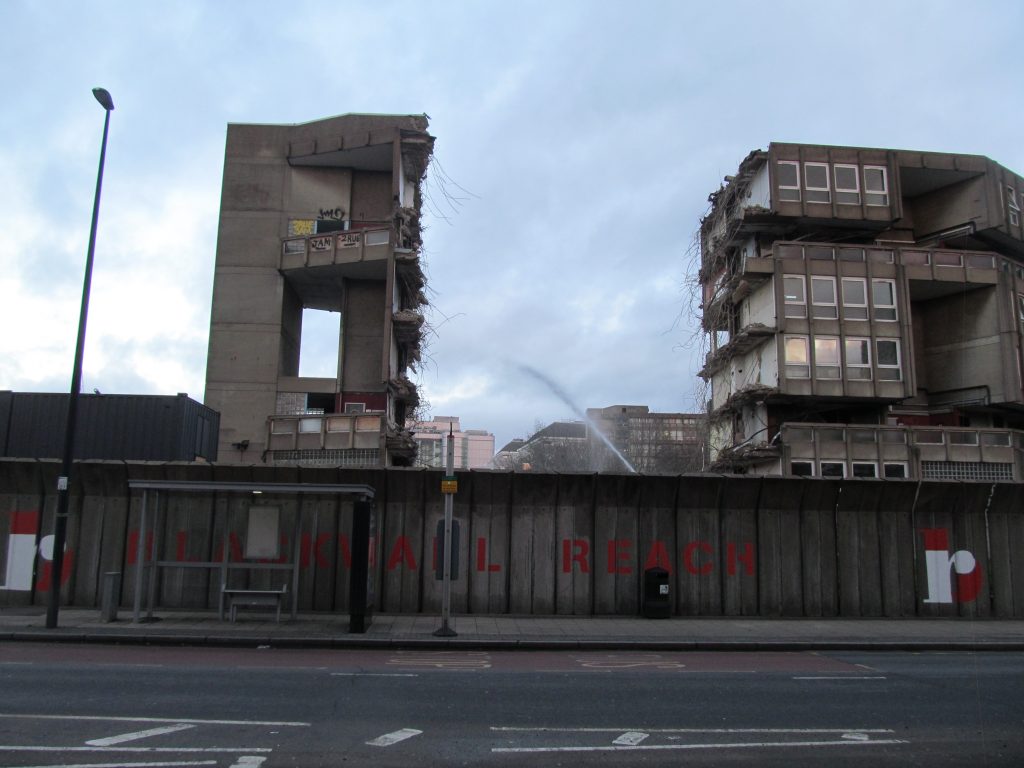
It doesn’t take a great deal of imagination to picture the wall being removed with landscaping then allowing far better integration into the area. Maintenance and a cleaned up facade of buildings would’ve done much to rebut negativity and it could’ve been a real asset. But it never happened.
Further north is the main tower of element of Blackwall Reach. This is just beside Blackwall DLR station.
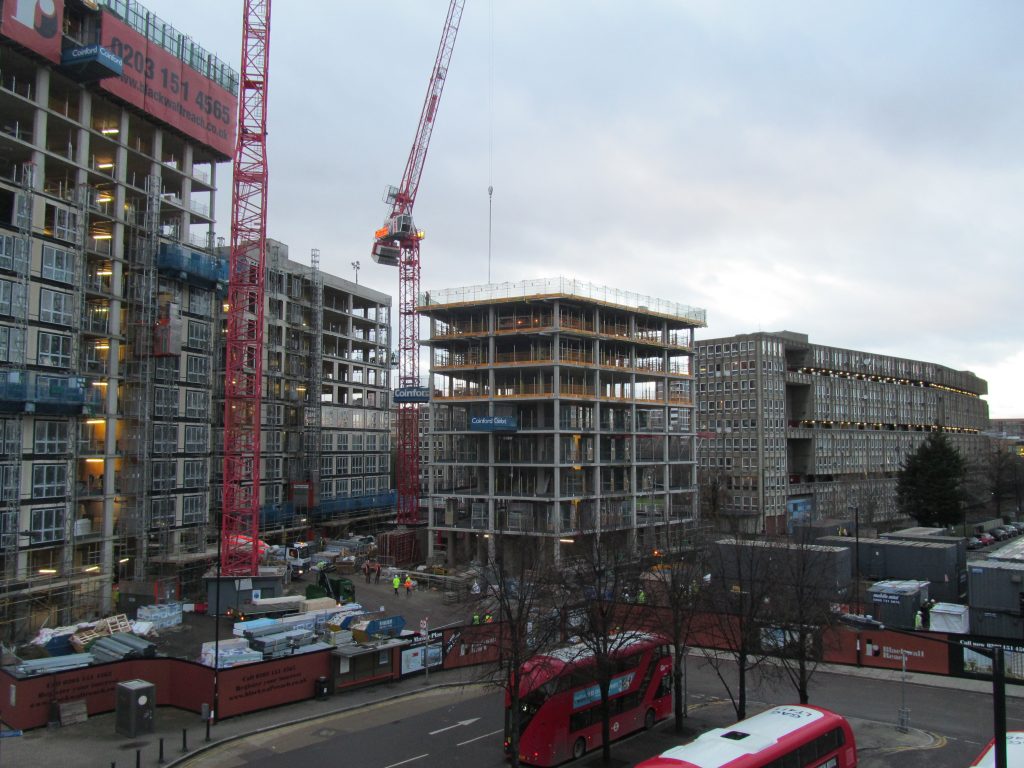
Here’s a view towards the new builds showing the green space in the middle of Robin Hood Gardens. Whilst it was shut off from the outside world through those big walls it had a sizeable area of internal greenery like many estates:
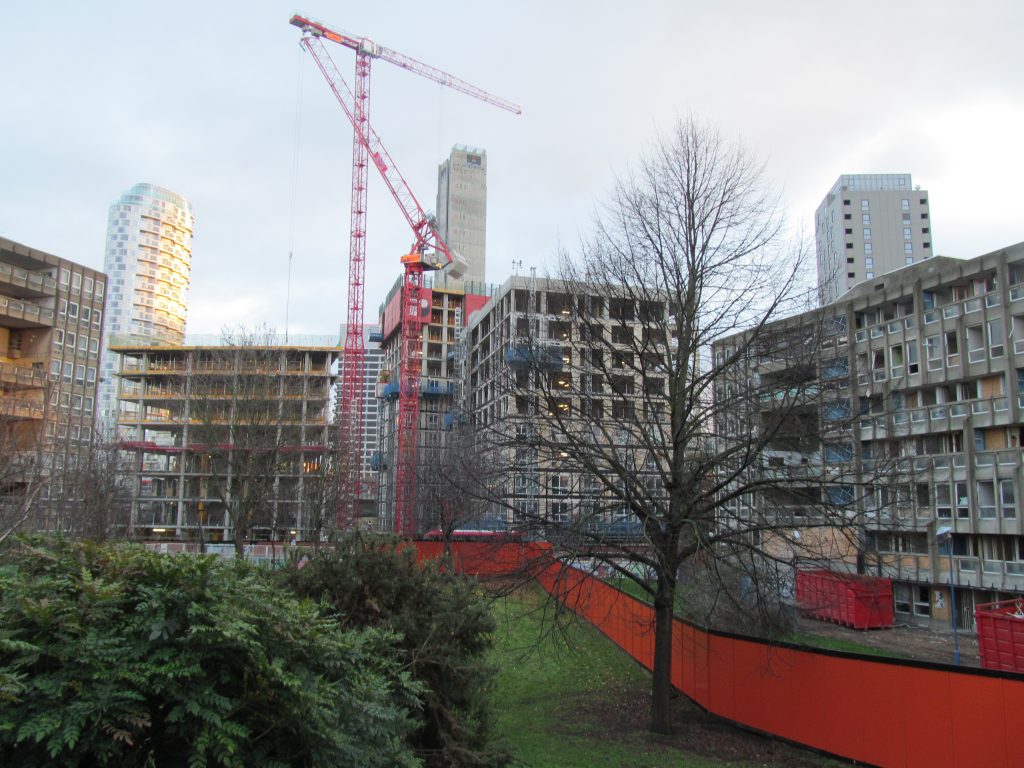
Here’s a view of how things are by the station, and how it should eventually turn out:
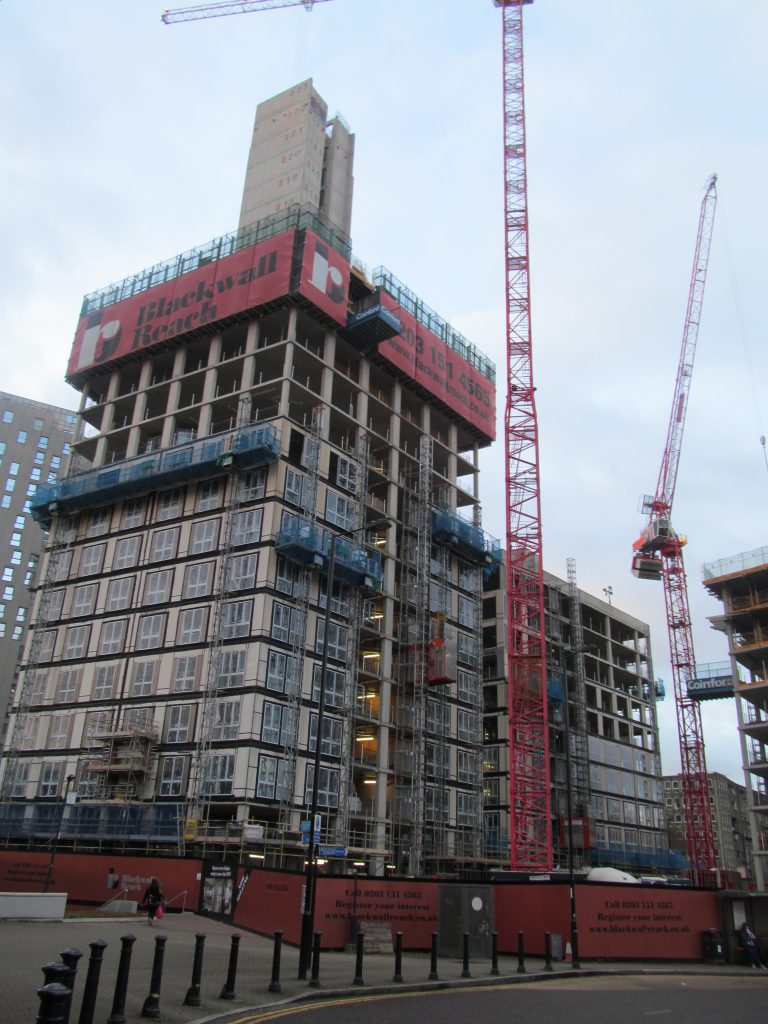
The final article:
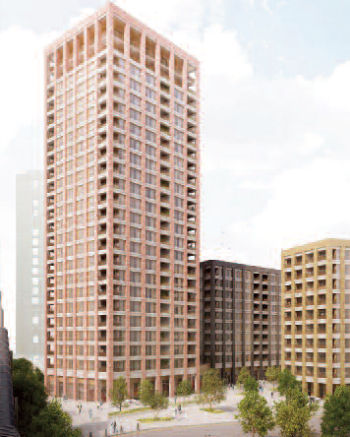
All very nice and pretty inoffensive. High density homes by the station makes sense (though the DLR is struggling as it is with no additional trains coming for at least five years). It should be noted all this could’ve been built whilst retaining Robin Hood Gardens, or at least parts of it.
But it’s all immaterial now as the demolition is in full swing, as it were.
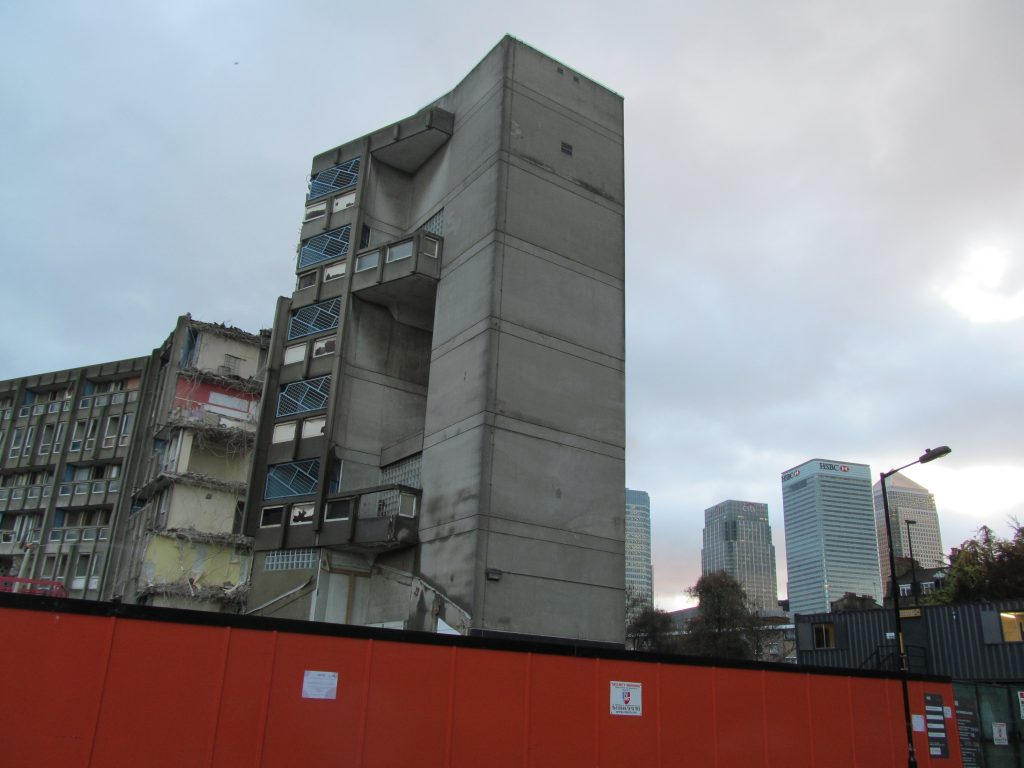
All too many estates are going including the most thoughtful and interesting of designs. The importance of these buildings in post-war British history is being erased when investment and creativity would allow some of the most intricate designs to be retained.
In the case of Robin Hood Gardens, even one block retained, renovated and opened up through wall removal and new landscaping would mean almost no loss of density to overall post-completion housing totals.
It’s reminiscent of Thamesmead’s ongoing demolition and rebuild – another bold GLC estate with design flaws never rectified.
At Thamesmead’s complex and expensive early stages, such as those homes along Harrow Manorway, ground floors were given over to car parking due to flooding fears after 1953. This was of course before the Thames Barrier was constructed upstream in 1984 and river walls heightened downstream.
Converting ground floor garages to living areas with street-facing windows would’ve avoided the existing blank frontage issues and help interaction with streets.
It’s not all bad news, mind, Erno Goldfinger’s Balfron Tower is to be retained and renovated though not without significant controversy.
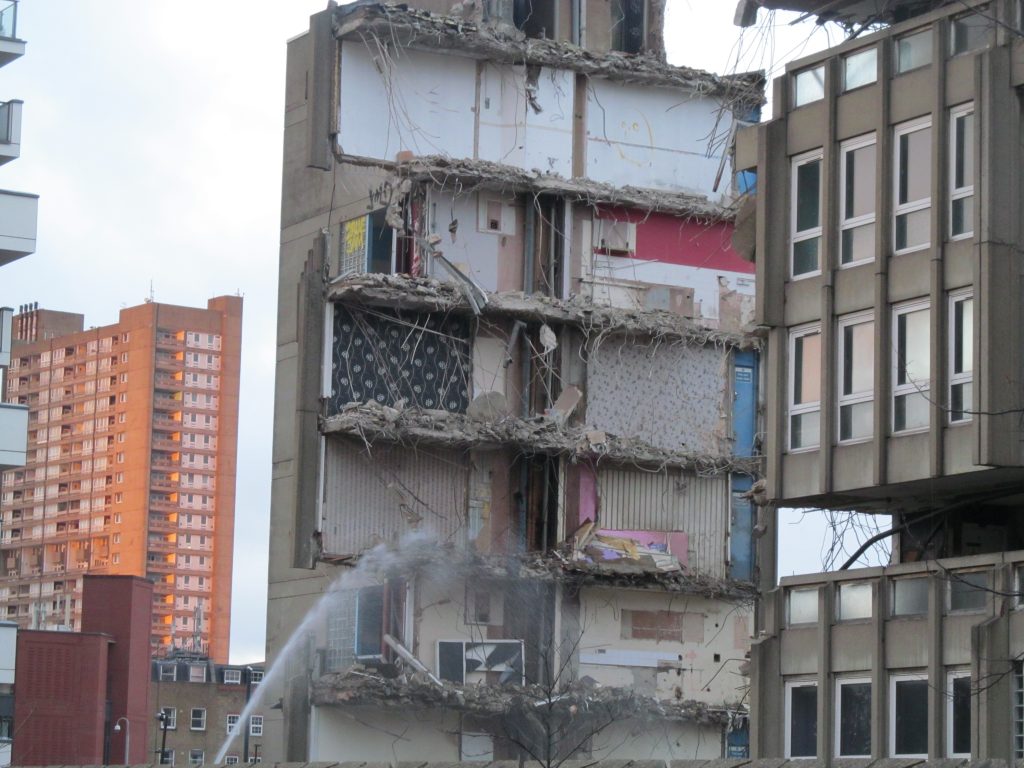
It sits in the shadow of the now-punctuated Robin Hood block and looked radiant as the setting sun lit up the facade.
If we are to demolish innovative post-war design which offer an important legacy in architecture and housing, at least try to ensure new-builds have merit. At Blackwall Reach, so far at least, that has not happened.
Thanks to those who support the site. Donations help website costs and funding things such as travelling to cover and document events such as this demolition. Help can be given here from around £1.
